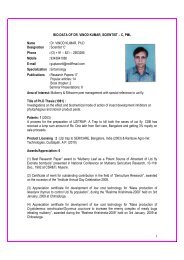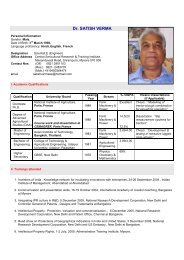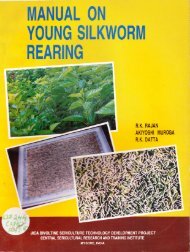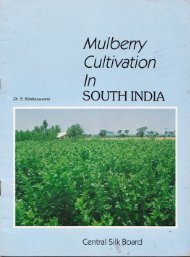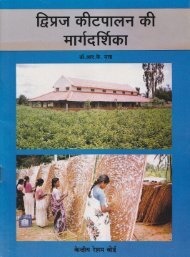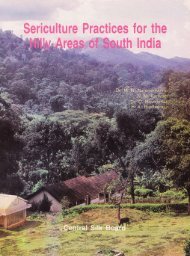BIVOLTINE RACE AND
Manual on Bivoltine Rearing, Race Maintenance and Multiplication
Manual on Bivoltine Rearing, Race Maintenance and Multiplication
- No tags were found...
Create successful ePaper yourself
Turn your PDF publications into a flip-book with our unique Google optimized e-Paper software.
8.0. COCOON DRYING : ': :<br />
The primary objectives of drying cocoons are to kill pupae before they emerge and to kill<br />
maggots of parasitic moths and flies if any, before they emerge from the pupae.Secondary<br />
objectives are to reduce the water content of fresh cocoons to minimise the chances of fungal<br />
infection during the period of storage so that the quality of cocoons becomes suitable for<br />
subsequent processing.<br />
8.I. Hot air drAing<br />
The best method of cocoon drying is done at different temperatures for 6 hours. The weight<br />
of green cocoons is recorded before drying.<br />
Drying of cocoons is generally done by setting the initiai tenrperature with the range of<br />
95-60'C and then Lry lowering the temperature gradually as drying progresses. Finally, drying<br />
is completed at the temperature of around 60"C.<br />
The procedure adopted for green cocoon drying is detailed below.<br />
1) At the first one hour<br />
2) At the second hour<br />
3) At the third hour<br />
4) At the fourth hour<br />
5) At the fifth hour<br />
6) At the sixth hour<br />
In step wise drying, one should check the temperature every one hour following the above<br />
mentioned standard method. At the beginning the moistuie in the cocoon is very high, so that<br />
high ternperature is.preferred. After one hour of drying at 95'C, moisture in the cocoon is<br />
decreased, then iow temperature is suitable for cocoon drying.<br />
After five hours of drying, the first coeoon weight should be recorded. The second cocoon<br />
weight should Lre recorded after drying again at 60'C for 30 rninutes. If the first and second<br />
cocoon weight found same, one can assurne that drying is completed. Then the percentage of<br />
the driage rnay be calculated. However, the standard drying percentage is calcuiated from<br />
cocoon shell ratio.<br />
9.0. R-EELXNG TEST<br />
The test reeling centres have to process the eocoons as mentioned below.<br />
Out of 1000 reeling cocoons, first 600 coeoons to be reeled are taken at random and<br />
divided into two tlatches of 300 cocoons each. All the reeling parameters are to be sturiied. In<br />
case, for any character, if the deviation of the results in the two tratches is significant, then the<br />
ttrird batch of 300 cocoons are to be reeled again and the results are obtained. Then average<br />
is calculated. The remaining 100 eocoons are tcl be used only for cooking test.<br />
Note :<br />
95"C (drying temperature)<br />
93"C<br />
90"c<br />
85'C<br />
75"C<br />
60"c<br />
300 : 300 : 300 : the cocaon weigttt shoutd be taken und the weiglrt b be nmde equal by interchanging<br />
the cocoons among them.<br />
Ihe results obtuined out of three batches, the batches which are shawing chqrscters nearer only to be<br />
taken for calculqtion of average datn.<br />
3'l




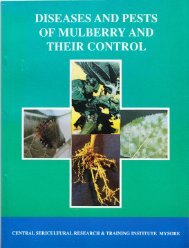

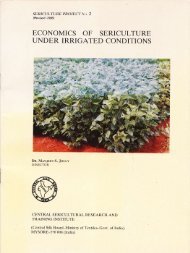
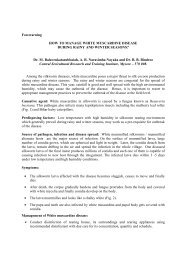
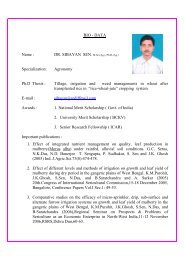
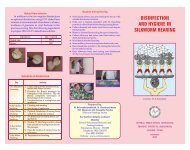
![E}A]\GALORE](https://img.yumpu.com/54052619/1/190x260/eagalore.jpg?quality=85)

